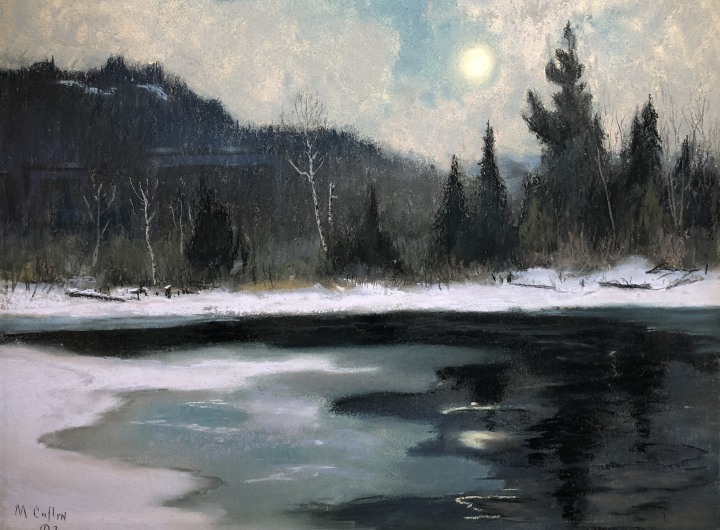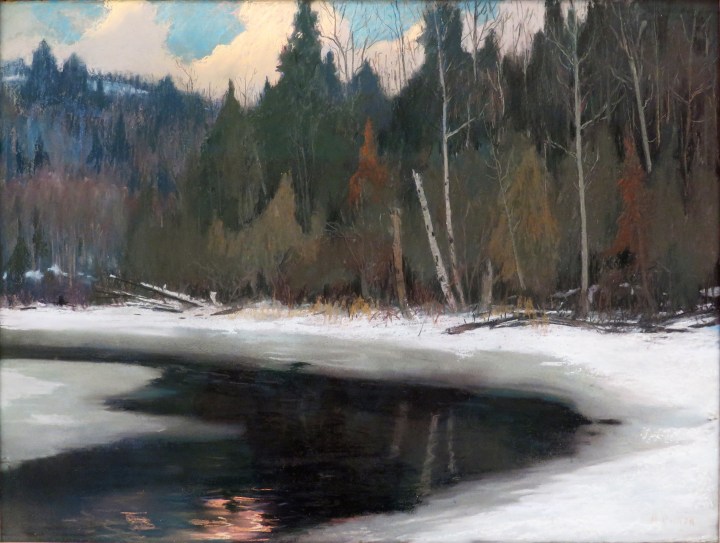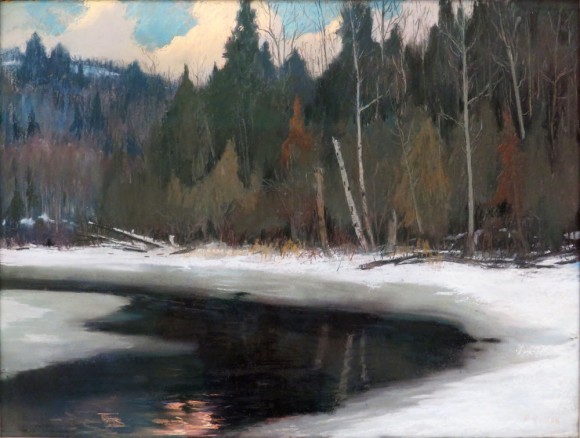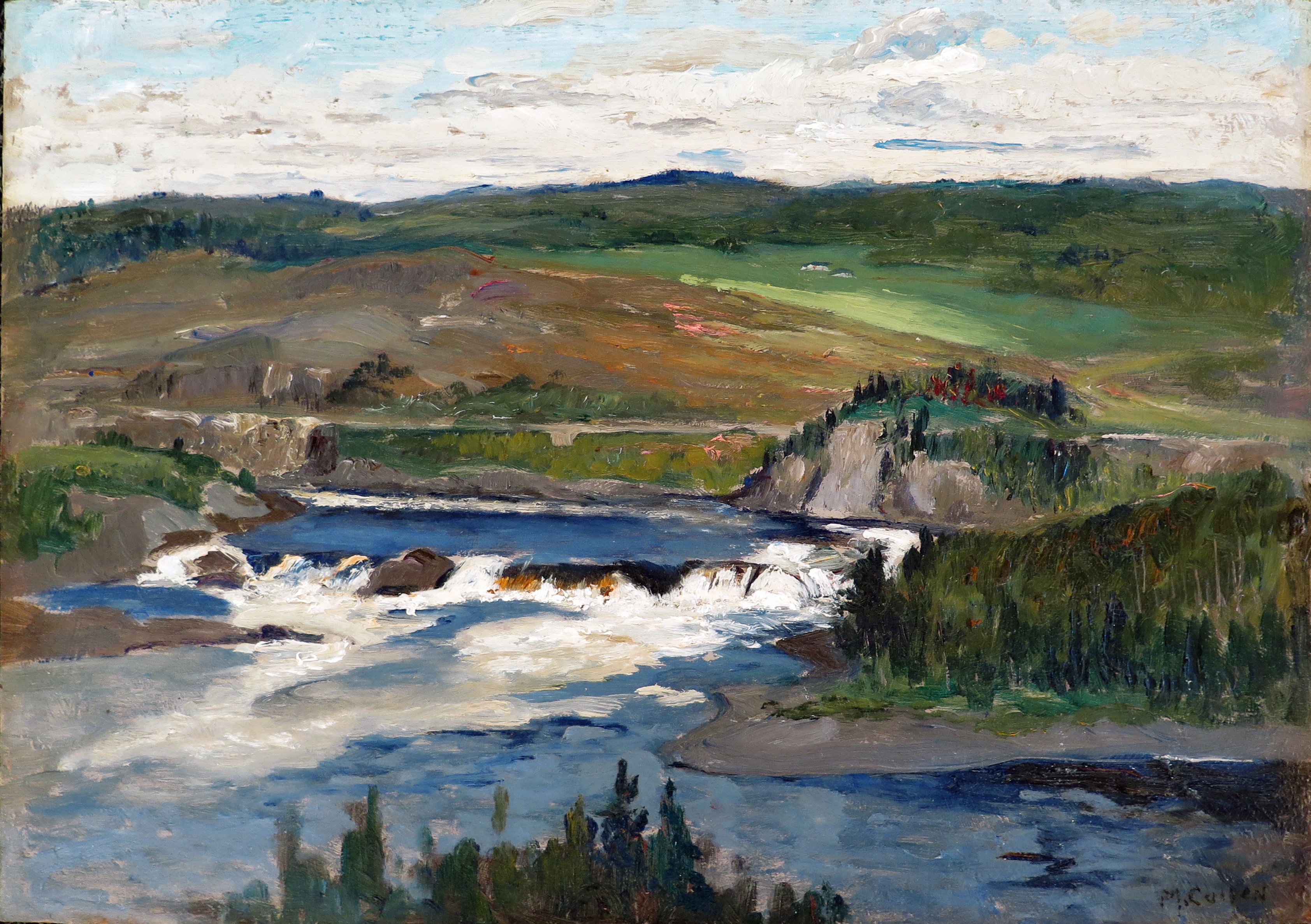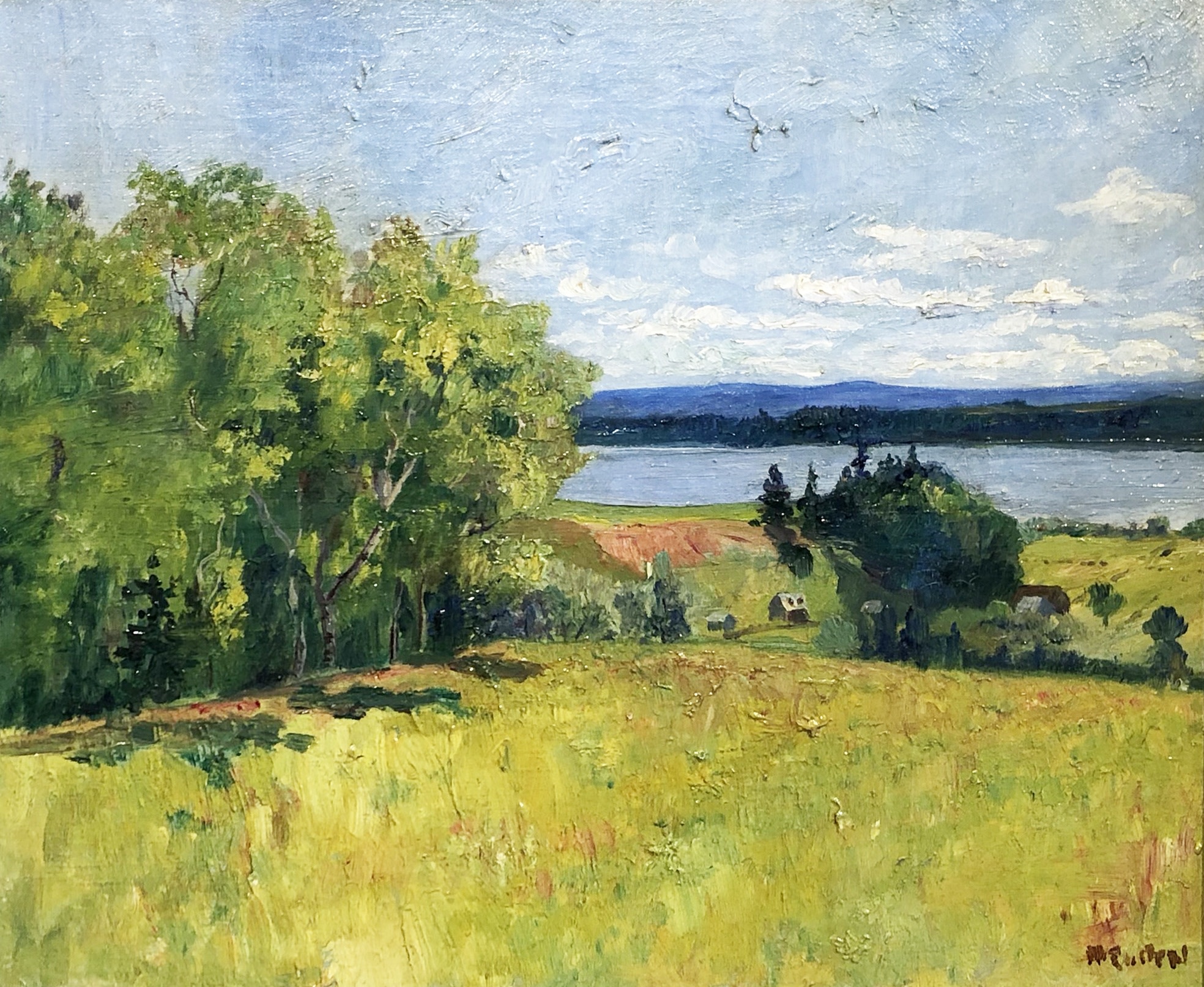Maurice Cullen and His Brilliance in Pastels
Helen and I were in Boston over New Year’s and visited an outstanding exhibition at former AGO director Matthew Teitelbaum’s Boston Museum of Fine Arts, a presentation of forty masterpieces called French Pastels: Treasures from the Vault.
The exhibition, now finished, included exceptional works in the medium of pastel by Cassatt, Degas, Renoir, Boudin, L’Hermitte, Redon, Pissarro, Manet, Millet, Monet and Thaulow, among others. (While we were at the museum I am told that Matthew was seen at McMichael catching the Milne exhibition before it closed.)
The descriptions on wall panels, complemented by additional information on the website of the Museum of Fine Arts Boston are highly instructive, giving context to the important and not commonly understood virtues of pastel. By extension this insight adds to a greater appreciation of Maurice Cullen’s oeuvre in the the medium of pastel.
Maurice Cullen was an art student in 1889 in Paris when the French journalist Paul Desjardins published the sentences welcoming visitors to the exhibition. The critic wrote, “Pastel is the lightest, most fugitive of techniques —like the pollen of a lily or the dust from a butterfly’s wings that an artist scatters and fixes on paper. Pastel should be used to convey what is most ephemeral in nature - the expression passing over the human face, the rapid interplay of sunlight and shadow - nothing more” [1].
“Pastel is immediate and, potentially, ephemeral,” writes Katie Hanson, Assistant Curator of Paintings, Art of Europe, and curator of French Pastels: Treasures from the Vault. “During the late 19th century, avant-garde artists in France and beyond took up pastels to capture the here and now, [...] passing effects of light or weather. [...] Pastels were perfectly suited to this aim: an evanescent medium for an evanescent subject. ‘That’s the the triumph of this technique,’ noted a French critic at the time, ‘it must capture what is most elusive'” [2].
What visual experience could be more evanescent than Maurice Cullen’s intrigue with effects of twilight on his beloved Caché, North, or Devil’s rivers in early spring? Capturing the “here and now” is an act so well suited to pastel because, without a need for drying time, it offered “tactility and immediacy, qualities so aligned with [the] vision” of avant garde impressionist artists [3]. The medium of pastel has “idiosyncratic qualities — its velvety granular, fugitive nature - for example — to create dazzling effects" [4]. Pastel can be at times opaque and at others transparent. The medium permits a glow and luminosity that is peculiar to pastel. The excitement for Cullen to be able to compose and complete a work of scale “as rapidly as the inspiration itself” is evidenced from one or several of his plein air sketches, including Early Spring on Caché River and Twilight in the Laurentians, which are pictured above [5].
In a book written in the early 1930s, William R. Watson explains, “[Cullen] confesses his pleasure for the flexibility of pastels. In his hands, the pastel is very expressive: there are subtleties of tone only attainable in this medium [...] Many of his beautiful Laurentian scenes are executed in this medium.” Watson continues, “Often handled with extreme strength of outline, these pastels are subtle enough to suggest some profound mystery, just hinted at, or half-revealed” [6].
In a previous publication, Watson observed,
"In deep winter under a canopy of snow, where the woods are a silhouette of black against a shimmer of radiant light, Cullen paints his poem to the glory of the Laurentian winter. In his pictures one feels the very mood of hushed solitude, the exquisite silence of the snow-enshrouded world. It is indeed the very soul of this country that he paints. The forests to him are the perpetual forests of virile unsullied nature, never are they the woods of the passing hunter or the limits of the timber merchants. It is this larger vision of things, this deeper aspect that creates the intellectual and emotional appeal in Cullen’s art" [7].
Robert Pilot described his step father and mentor’s focus from 1902 as the beginning of “...a period of intensive study of the effects of light upon snow with all its intricate system of complementary colours and reflections. Few have equalled his sureness in interpreting this aspect of nature. [...] He also traced the hours of the day to record the transitory play of light. “At some hour of the day” he observed, “the commonest subject is beautiful” [8].
Cullen considered his pastels to be of equal importance to his oil paintings, pricing them at the same values as his oils. The sentiment was shared by his contemporaries and in a May 1922 Gazette review his show in at the Arts Club, one critic wrote,
“The pastels shown are beautiful and have a strength which admirably exemplifies what can be done with the fragile chalk medium in the hands of a finished artist — “On the Caché River,” with its evening sky, timbered shores and icy water; “Evening” with water-sodden ice, trees, and mountain; [...] and “A Laurentian Hill,” which sings the praise of the north in winter when the sky is a wash of intense blue from horizon to zenith. [...] ‘The Northland,’ the largest pastel of those shown, is a noble composition that conveys the very spirit of the title. [...] Here is solitude” [9].
With the insightful comments from French Pastels: Treasures from the Vault, surely the energy and excitement conveyed in these two richly-worked pastels, Early Spring on Caché River and Twilight in the Laurentians, is indebted to the immediacy that the pastel medium provided.
We invite you also to view two fine oil paintings by Cullen, which we have available for your purchase.
Works Cited
1. Paul Desjardins, French journalist, 1889, as cited in the didactic panel accompanying French Pastels: Treasures from the Vault, Museum of Fine Arts, Boston, USA, Charlotte F. and Irving W. Rabb Gallery (Gallery 155) 30 June 2018 - 6 January 2019. Visited 28 December 2018
2. Museum of Fine Arts, Boston. “French Pastels | Museum of Fine Arts, Boston: Exceptional display of rarely seen works by Millet, Degas, Monet, and more.” Museum of Fine Arts, Boston. https://www.mfa.org/exhibitions/french-pastels, (retrieved 1 January 2019)
3. Didactic panel, French Pastels: Treasures from the Vault, Museum of Fine Arts, Boston, 2018
4. Didactic panel, “The Medium”, French Pastels: Treasures from the Vault, Museum of Fine Arts, 2018
5. Ibid.
6. William R. Watson, O.B.E., Maurice Cullen, R.C.A. : A Record of Struggle and Achievement, (Toronto: Ryerson Press, 1931), p. 26
7. William Watson, Maurice Cullen, R.C.A.,(Toronto: Ryerson Press, 1930), p. 22
8. Robert Pilot, Maurice Cullen, 1866-1934, exh. cat., (s.l. [Hamilton?]: The Art Gallery of Hamilton, 1956), unpaginated
9. “Northland Spirit Caught by Artist: Pictures by Maurice Cullen Are on View at Arts Club / Marked by Spontaneity / Characteristic Paintings and Pastels Show Artist’s Extraordinary Flair for Winter Scenes”, The Montreal Gazette, Vol. CLI, No. 109, Monday 8 May 1922, p. 3




